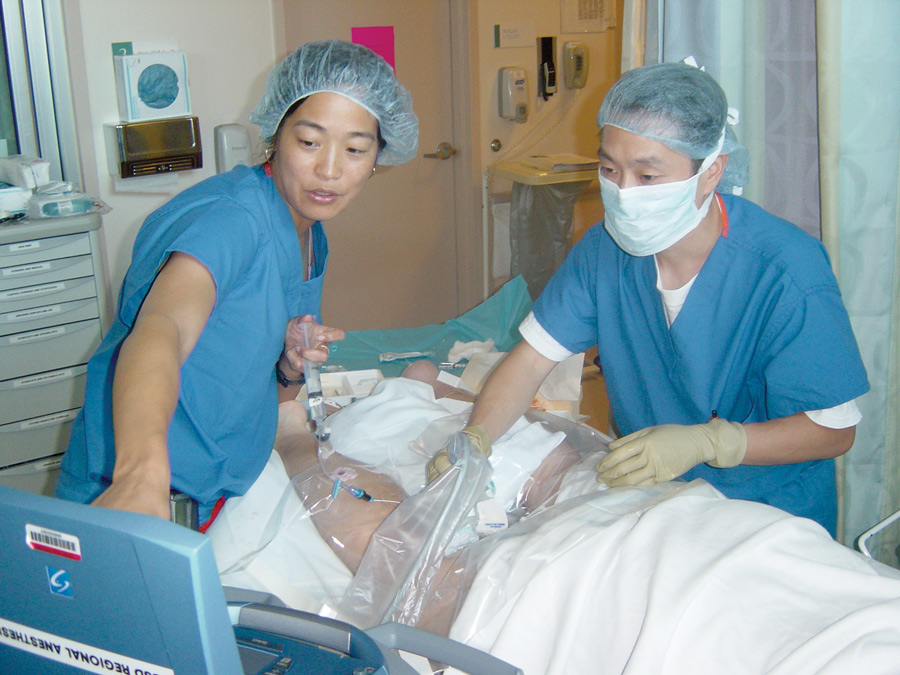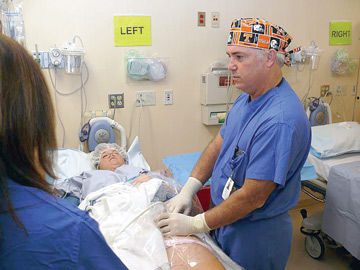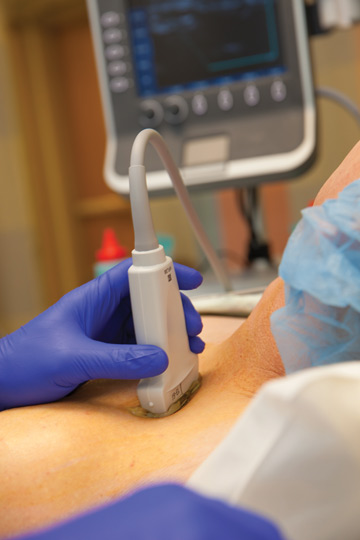If every anesthesia practitioner knew how to perform these five basic block techniques with ultrasound guidance, there would be a massive increase in patient access to regional anesthesia. Each of these blocks represents a transferable skill, and practitioners may choose to substitute a block on the list with an alternative block used for a similar indication.
1. Interscalene brachial plexus. Everyone should be able to offer a block for shoulder surgery, and the interscalene block is still the gold standard. Other ultrasound-aided blocks have been developed in the last few years, but a basic interscalene block is something any anesthesiologist should be comfortable placing. It has a long track record and it covers the entire site of pain for every shoulder procedure, including total shoulder replacements.
2. Infraclavicular brachial plexus. This block is good for patients undergoing distal upper-limb surgery at the elbow, wrist or hand. Some practitioners prefer to use an axillary brachial plexus block, which may work just as well. For these surgeries, you need a block of the brachial plexus below the clavicle close to the shoulder. If you know how to do one of these two types of blocks, that's sufficient.
3. Adductor canal. Providers used to place a femoral nerve block for knee surgeries. Today, we perform the adductor canal block, which is a more selective block in the femoral triangle to minimize motor weakness. Again, members of your anesthesia team should know how to place a femoral or an adductor canal block. Either provides pain relief for major knee surgeries, and knowing how to do one of these is a springboard to expand your practice should you decide to perform more advanced blocks.
4. Popliteal sciatic. Anesthesia practitioners should be able to identity the sciatic nerve behind the knee in the popliteal fossa. A popliteal sciatic block provides great pain relief for foot and ankle surgeries, which are common procedures in outpatient settings.
5. Transversus abdominis plane (TAP). A TAP block is the most common interfascial plane block for abdominal and pelvic surgeries. It can be performed quickly in the operating room and provide somatic abdominal wall analgesia for outpatients having minor surgeries such as inguinal hernia repair or laparoscopy.
When more anesthesia practitioners know how to use these techniques, attitudes will change about the effectiveness of regional anesthesia and barriers to implementing the pain-relieving practice into clinical pathways will be addressed, including differing opinions on how much patients benefit from their use and how practical the techniques are to implement. Concerns about liability and cost persist as well. It's my hope that improving research, sharing best practices and increasing awareness of the benefits of these blocks will remove those obstacles.
— Edward R. Mariano, MD, MAS
.svg?sfvrsn=be606e78_3)



.svg?sfvrsn=56b2f850_5)